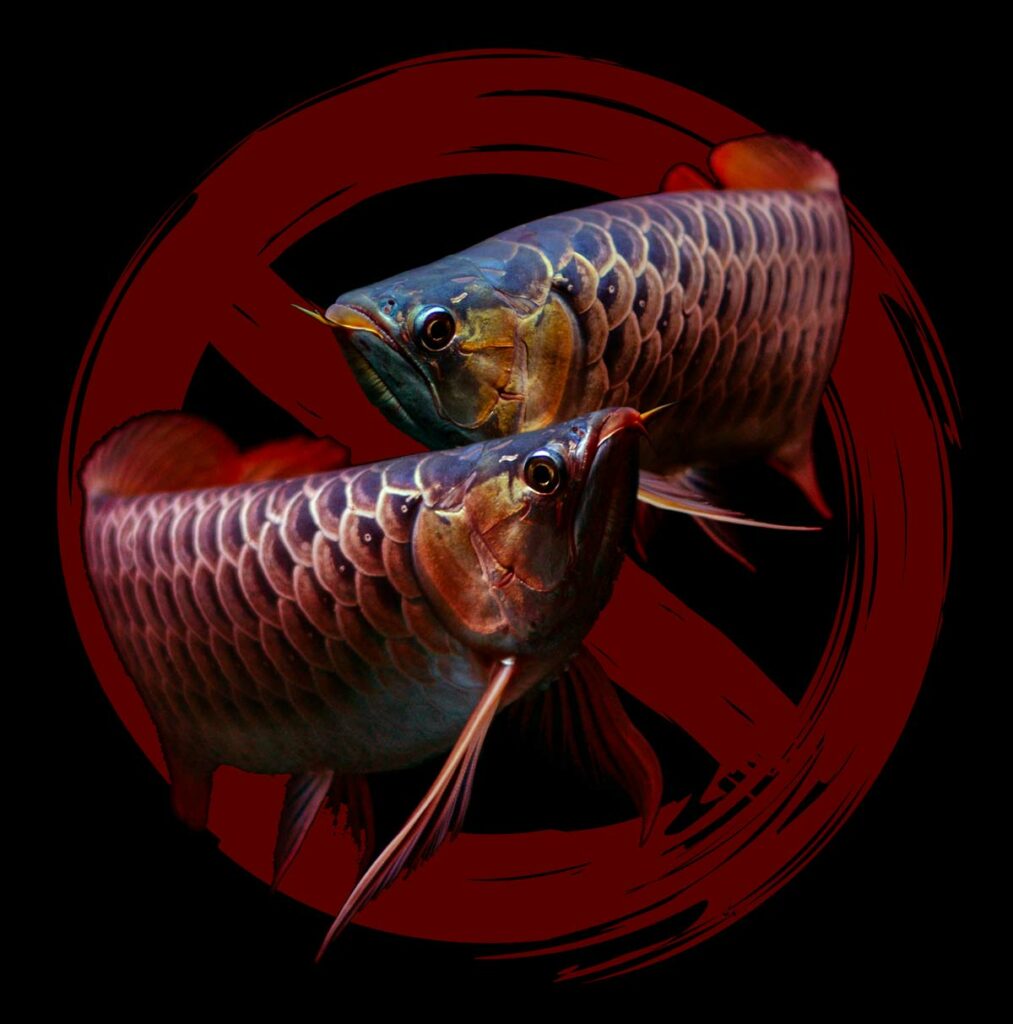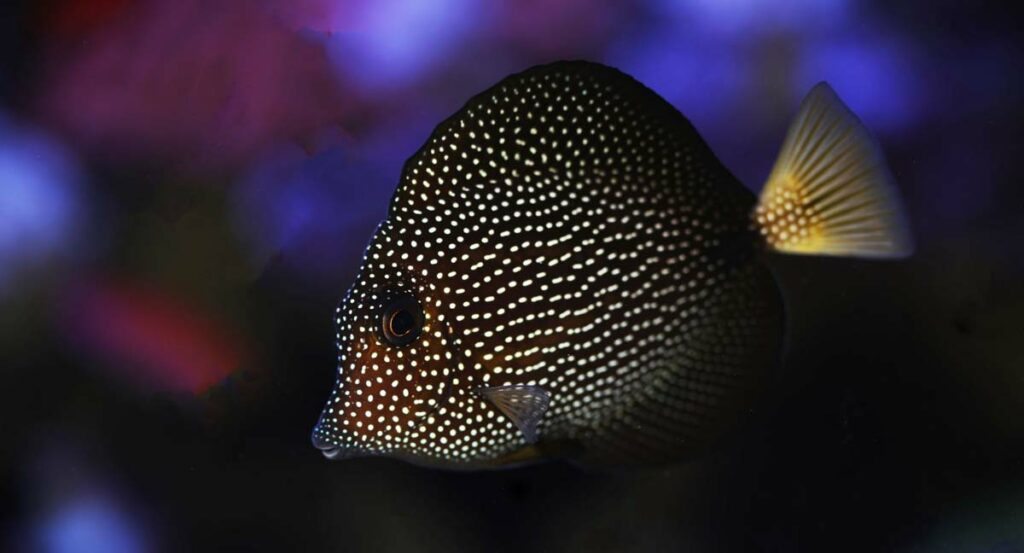
Opinion from an Aquarium Trade Observer
This guest contribution comes from an experienced aquarium industry advocate with significant experience concerning Lacey Act issues, debunking the myths surrounding the currently proposed Lacey Act amendments.
The news of legislation expanding the Federal government’s reach into the aquarium trade [and the larger pet trade as well] has many aquarists concerned and quite a few confused. Of course, the Internet did what the Internet does, and groups, forums, and videos are now rife with rumors, speculations, and falsehoods. So, let’s break down seven of the top myths currently circulating on social media and YouTube about the impact should the amendment to the Lacey Act be signed into law.
1) All aquarium fish would be banned next year. — Not likely. While there is no precedent for a federal “Whitelist” and USFWS would have to promulgate regulations as required by the statute, there would probably be some list. How many and what species would be included is far from clear. Due to the jurisdictional limits of our federalist system, the current inhabitants of your aquariums would not be a legal concern unless the laws of the state or local jurisdiction you reside in change, or the animals move across state lines to trigger federal jurisdiction. But otherwise, there is little certainty about how broad the impact would be due to the vague language provided in the statute and the complexity involved in rulemaking by federal government agencies. However, we know in countries where similar legislation has become law, the aquarium hobby is only a fraction of what it once was, both regarding the diversity of species available and the number of active aquarists.
2) The law would only apply to wild-collected and/or imported animals. — No, the proposed language does not exempt captive-bred or domestically produced animals. Whether a fish or other animal comes from the rainforest river in Colombia, a reef in Australia, a breeding vat in Thailand, a mariculture operation off the shores of Bali, or a farm pond in south Florida would make no difference. The only criterion that would matter is whether the species is included on the “Whitelist.” The origin of a particular individual animal would not matter at all.
3) The intent of the proposed legislation is to prevent invasive species introductions. — Sort of. The original intent of the injurious species list provision of the Lacey Act was to protect the American economy and prevent environmental problems. However, most of the interest groups pushing the current bill have not been shy about their opposition to captivity and the wildlife trade. These groups are deep-pocketed and have teams of PR experts, lobbyists, and attorneys who are well versed in using laws that address legitimate problems to push radical agendas that the majority of people would object to if they recognized the true impacts. These agendas generally aren’t hard to discern to the experienced observer, but to the vast majority of the general public, the actions often appear innocuous and well-intentioned. There are more effective and reasonable ways to combat invasive species introductions than a one-size-fits-all approach for a massive geographical area that contains almost every climate zone on earth.
4) Most species currently in the trade and hobby will be automatically added to the “Whitelist,” and it will be easy to add new species in the future. — Extremely unlikely. Adding species to the “Whitelist” would require USFWS to promulgate multiple regulations. First USFWS must promulgate a rule defining the term “minimum quantities” for species that were imported into the United States or transported between states and territories in the previous year. Then the USFWS would have to determine which species qualify, a process that will be difficult considering data is for the most part not gathered for which species and in what quantities tropical aquarium fish are moved between states. Any data USFWS would be able to gather would be likely to be available to activist groups either through Freedom of Information Act Requests or via discovery in subsequent legal challenges. This data would be distorted and spun for use in anti-aquarium-keeping campaigns. USFWS would also have to follow procedural rules, including opening a public comment period and publishing Federal Register notices when adding any new species to the “Whitelist.” Federal rulemaking is governed by the Administrative Procedure Act and is complicated, arduous, and subject to litigation. It can take years for even seemingly simple regulations to be finalized and become law. The organizations lobbying for the Lacey Act amendment have teams of lawyers who are experts in using the administrative rulemaking process to further their anti-captivity agendas. It is common practice for them to use lawsuits to prolong the implementation of administrative rules and create prohibitive costs for businesses and organizations engaged in the activities they oppose. These groups that oppose all trade and keeping of wildlife fight battles of attrition, using well-stocked war chests to exhaust their adversaries’ resources with constant litigation and sometimes even PR smear campaigns. Each step to formulating and expanding the “Whitelist” would likely encounter significant opposition during the required public comment periods and face extensive litigation challenges to delay the finalization of regulation on any procedural and substantive grounds possible. While adding species to the “Whitelist” would be time-consuming, expensive, and likely difficult to overcome the burden of proof required to overcome the presumption of injuriousness, the Secretary of the Interior would have the authority to determine any species injurious using an emergency declaration, and then has three year period to evaluate whether the species fits the criteria of an injurious species. Determining that a species is non-injurious would require significant resources, but banning the import and interstate transport of a species could be done with no due process other than simply publishing the declaration in the Federal Register.

5) The legislation provides federal funding specifically earmarked to study species so they can be added to the “Whitelist.” — False. The money in question in the COMPETES Act is reserved for expanding wildlife law enforcement. That is, it will largely be spent hiring, training, and deploying agents to conduct criminal investigations and achieve convictions. There is no funding specifically allocated to promote increasing the number of species on the “Whitelist.” There is however funding that could be used to investigate and prosecute individuals and businesses who may try to ignore any wildlife law including a “Whitelist,” no matter how unreasonable, minor, or inconsequential the violator may perceive the law to be.
6) The law would be unenforceable so there’s no need to worry. — To a large extent, it is true this law would be difficult to enforce. However, law enforcement budgets have been growing for federal agencies tasked with combating wildlife crime, prosecutors are no longer hesitant to prosecute wildlife violations, and federal judges have become significantly more heavy-handed in sentencing after convictions of these sorts of crimes. It is almost certain there will be significant consequences for many of those who chose to ignore the law and trade in or travel with species not on the “Whitelist.”
7) Asian Arowana can be made legal by adding the species to the proposed Lacey Act “Whitelist.” — Unfortunately, even if Asian Arowana are added to the “Whitelist,” they would still not be legal to import or possess in the United States. The illegality of the species has nothing to do with the Lacey Act. The Asian Arowana (Scleropages formosus) is listed as endangered under the Endangered Species Act (ESA), a completely different federal statute. Species designated as endangered under the ESA are banned from import or possession, with a few exceptions, almost none of which are likely to apply to the species. The confusion likely stems from the ability of law enforcement to utilize the Lacey Act to prosecute cases involving any wildlife crimes that violate federal, state, tribal, or foreign law. Prosecutors often use the Lacey Act as a tool when enforcing ESA offenses. However, this section of the Lacey Act is separate from the injurious species provisions of the law. The list of threatened and endangered species under the ESA is completely different from the list of injurious species under the Lacey Act. Adding Asian Arowana to the proposed Lacey Act “Whitelist” would not remove the species from its listing under the ESA.
Hopefully, this clarifies some of the misconceptions currently circulating on the Internet. This proposed legislation will undoubtedly have severe impacts on the aquarium hobby. Savvy aquarists will not underestimate the dire consequences of failing to consider the implications for themselves, the livelihoods of those involved in the trade, and the many benefits aquariums provide to people and aquatic species.






I have been telling people for years to support USARK because reptiles are always the first target to ban.
Usark is the group that’s going to lead this fight. Help them help you.
“However, most of the interest groups pushing the current bill have not been shy about their opposition to captivity and the wildlife trade”
Who are these groups and what are their agendas? Why are they opposed to this? Please expand this part
A list of the groups you refer to would be good. “These groups are deep-pocketed”. But who are they?
Otherwise excellent summary. Thank you.